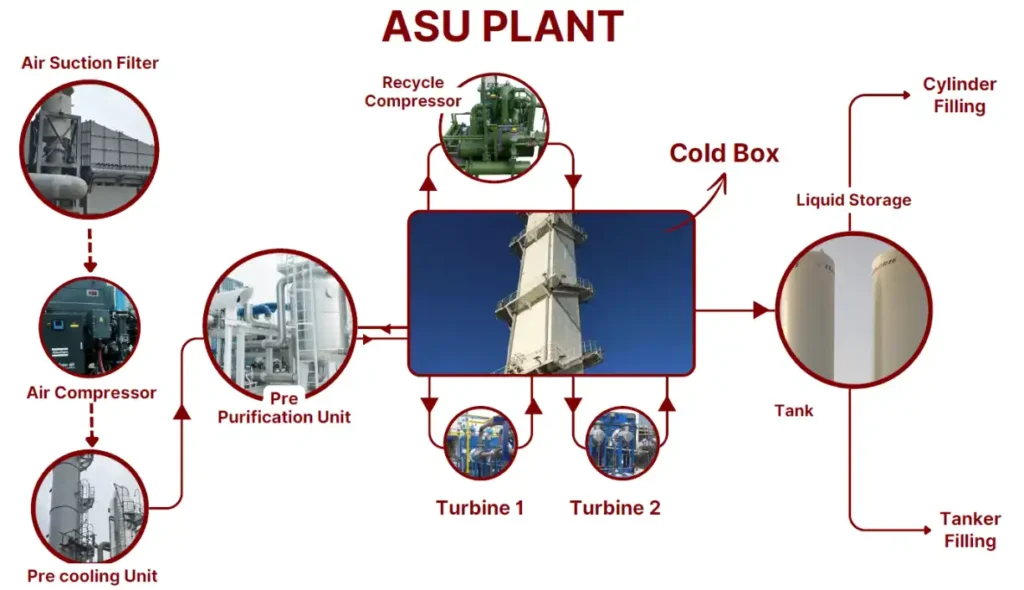Manufacturing Process

- As the air ascends the column, it is gradually warmed, and different components evaporate at their respective boiling points. For instance, oxygen-rich vapor rises to the top of the column, while nitrogen-rich liquid collects at the bottom. The argon, if present, is usually extracted as a side product at an intermediate point in the column.
Collection, storage and delivery: The separated gases are collected and sent to storage tanks, either pressurized tanks or cryogenic tanks. From there, the gases can then be distributed and supplied to various industries and applications, depending on their purity requirements.
Process gases, including carbon dioxide, hydrogen, helium, specialty gases and acetylene are produced by methods other than air separation. We produce hydrogen using our eletrolyzers. We also manufacture acetylene using calcium carbide and water.
Manufacturing Process
Using atmospheric air as our primary raw material, we produce nitrogen, oxygen and argon primarily through cryogenic air separation. We also have vacuum pressure swing absorption (“VPSA“) plants. While there are various methods that can be performed by an ASU, fractional distillation is the primary separation technique employed.
- Filtration, Compression and Pre-cooling: In this stage, atmospheric air is sucked and sent to a filter to remove dust and mechanical impurities. It is then then compressed in an air compressor. The compressed air then enters the pre-cooling system where the air is cooled.
- Purification: Before further processing, the compressed air is typically purified to remove impurities (including moisture, carbon dioxide, or trace contaminants). This step ensures that the separated gases are of high purity and avoids issues such as the freezing or plugging of the cryogenic equipment.
- Cooling: The purified, compressed air is cooled down to cryogenic temperatures using a series of heat exchangers and refrigeration cycles. The refrigeration required is generated by two sets of turbo-expanders. This results in liquefying the air, as cryogenic distillation relies on the differences in boiling points of the various components.
- Separation: The cold, liquefied air is fed into a distillation column (or a series of distillation columns), so that the air is separated into its primary components based on differences in boiling points: Nitrogen has a lower boiling point (-196°C or -321°F) than oxygen (-183°C or -297°F). Argon, if being separated, has an even lower boiling point (-186°C or -303°F).

